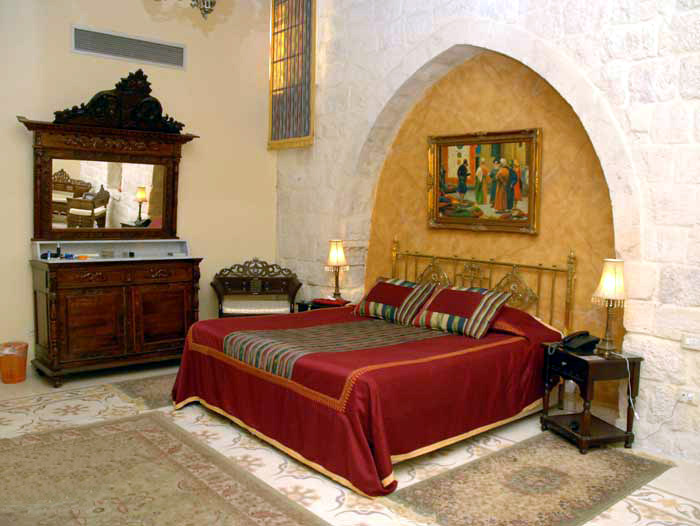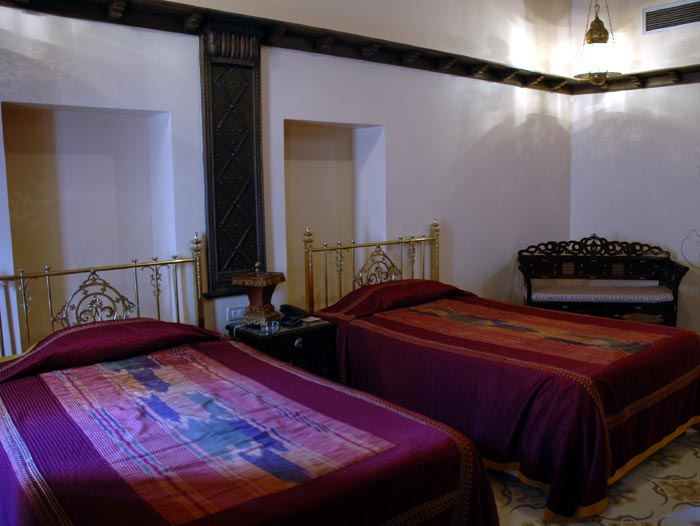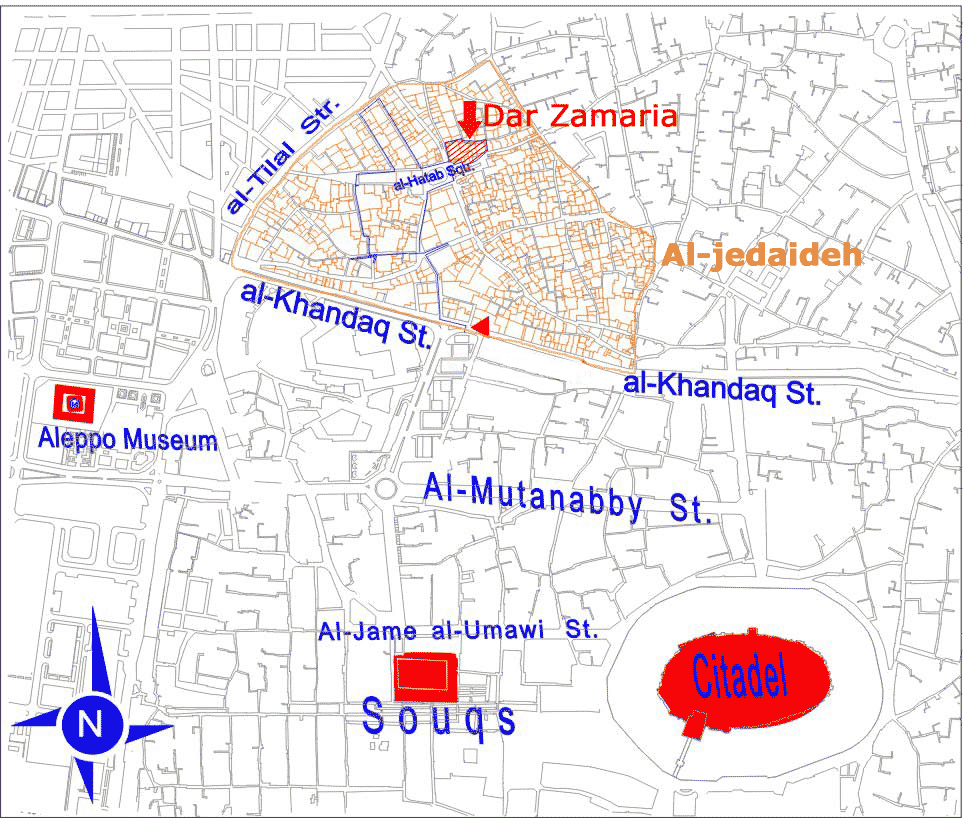The Terras
The Rooms



the map

History of Aleppo
|
Built on a small group of hills in the wide valley on the river Quweiq, Aleppo is considered one of the oldest continuously inhabited cities in the world and was inhabited as early as the 6th millennium B.C.
Home to more than 30 civilizations, Aleppo was controlled by the Hittites in the 14h and 13h century BC. , It fell under Assyrian rule from the 9th to the 7th century B.C. and was later occupied by the Persians and the Seleucids. Alexander the Great took over the city in 333 BC where it remained under Greek rule for 300 years. Aleppo fell under roman rule in 64 BC and remained under their control in the form of the Byzantine Empire, who made it a Christian stronghold until the Arabs took it over in 637 AD and joined it to the Abbasid Caliphate. The city has since remained under Muslim rule though under different dynasties and only experienced relative stability during the rule of the Ottoman Empire, which annexed the city in 1517. Syria came under French occupation following the decline of the Ottoman Empire after WW1 and finally gained independence in 1945.
|
 |
|
Historical Aleppo
Historically, the old city of Aleppo was built around the acropolis where the citadel today stands. Aleppo flourished under many civilizations and developed a highly organized social, religious and economical structure early on in history. Being subjected to constant invasions and political instability, the inhabitants of the city were forced to build cell-like quarters and districts that were socially and economically independent. Each district was characterized by the religious and ethnic characteristics of its inhabitants.
One of the finest examples of a cell-like quarter in Aleppo is Al Jedaideh. After Tammourlank invaded Aleppo in 1400 and destroyed it, the Christians migrated out of city walls and established their own cell in the north western region of the city. The inhabitants of Al Jedaideh, were mainly brokers who facilitated trade between foreign traders and local merchants. The quarter houses some of the finest churches, court yard houses and palaces, some of which were converted into museums, schools and hotels and restaurants
|
Walls were built to protect the city and the first walls date back to the roman era. Ironically, invaders who destroyed the walls to enter the city made it their primary task to rebuild and consolidate them. Today there is clear division between old and new Aleppo. The old city is contained within a wall, 3 miles in circuit, with seven gates and is home to 100,000 Aleppinens.
|
|
The World’s Largest Shopping Center
The city’s strategic trading position attracted settlers of all races and beliefs who wished to capitalize on the commercial roads that met in Aleppo from as far as china and Mesopotamia to the east, Europe to the west, and the fertile crescent of Egypt to the south. It is therefore not surprising to find the largest covered markets, or souq, in the world in Aleppo; approximately 12 hectares or 10 km. The Medina, as it is locally known, actively traded in imported luxury goods, such as raw silk from Iran, spices and dyes from India, and coffee from Damascus. The Medina also traded in local products such as wool, agricultural produce and soap. Most of the souqs date back to the 15th century and are named after various professions and crafts; hence the wool souq, the copper souq, and so on. Aside from trading, the souq accommodated the traders and their goods in Khans (caravanserai) scattered in the souq. The Khans also take their names after their location in the souq and function and are characterized by their beautiful facades and entrances with fortified wooden doors.
|
 |
|
Aleppo maintained a strong trading position until the decline of the Ottoman Empire and the Europeans started to use alternative routes to India and the Far East. Aleppo’s chief exports today are local agricultural products, such as wheat, cotton, pistachios and olives, and sheep and textiles.
A World Heritage Site
Aleppo city underwent major replanning after World War 2, as the French architect and urban planner, Andre Gutton, cut through the old city in an attempt to allow modern traffic easier passage. Gutton’s Master plan did not take the social, cultural and historical values into account and by the 1970s large parts of the old city were demolished. As awareness for the need to preserve this unique cultural heritage grew, the Gutton Master plan was finally abandoned in 1979 paving the way for UNESCO to declare the Old City of Aleppo a World Heritage Site in 1986. Several international institutions have joined efforts with local authorities to rehabilitate the old city of Aleppo by accommodating contemporary life while preserving the old one.
Today, Aleppo city has a population of around 1.7 million (2002), making it the second largest city after Damascus. Aleppo’s governate occupies 16,000 km and has around 3.7 million inhabitants. | |
Phone: (+963) - 21 – 363 6100
Fax: (+963) – 21 – 363 2333
Web Site: WWW.DarZamaria.com
|
에스 Zamaria
Named after the Zamaria family, who lived in the ·Dar·, or home, since the early eighteenth century, this beautiful Islamic courtyard house exhibits the splendors of ottoman architecture which flourished in the seventeenth century. Zamaria 가족을 누가 · 에스 ·, 또는 가정에서, 초기 18 세기 이래로 살고 명명된,이 아름다운 이슬람 집 마당이 17 세기에 번성했던 오스만 건축의 말 들어 전시하고있다.
Distinctive of the Aleppine courtyard house, the courtyard is 특색있는 Aleppine 집 마당, 안마당입니다
the center of the residence with the private residential quarters, the Iwan, covered patios, and the halls, that were designed and lavishly decorated to entertain guests, all face the courtyard. 개인 주거 지역은 주거의 중심, Iwan, 적용 patios, 그리고 홀, 그 설계됐다 lavishly 손님을 대접 장식, 모든 얼굴이 안뜰.
The courtyard, Iwan and halls have been converted into restaurants and resting areas and the private residential quarters have been converted into bedrooms. 마당, Iwan 및 홀 식당에와 휴식 장소로 변환되었습니다 분기 개인 주택 침실로 변환되었습니다.
|
|
One of several tourist projects owned by Martini Co., Dar Zamaria was open for business in 1997. 하나는 여러 개의 관광 사업을 마티니 주식 회사에 의해 소유, 에스 Zamaria 사업은 1997 년 오픈했다.
The hotel then consisted of 14 bedrooms, two restaurants; Al-Housh and La Terrace and a bar, Le Bar, in the cool cellar of the building. 그럼 호텔은 14 개의 침실, 2 개의 레스토랑, 알 - Housh 라 테라스와 구성되어 바 르 바, 건물의 지하실 멋진있습니다.
In 2000, a neighboring residence was connected to Dar Zamaria with a bridge like path adding eight rooms. 2000 년, 인근 거주지 에스 Zamaria 경로를 추가 8 실 같은 다리로 연결했다.
Orient House 동양 하우스
In 2006 Martini Tourism has added two courtyard houses in the neighborhood to its hotel chain under the name of Orient House , the a/m houses consiseted 28 luxury rooms including an amazing Agami/Gelani suite , with two fabulous court-yards. 2006 마티니 관광 동네에서 자사의 호텔 체인 동양 하우스의 이름 아래에, / m의 가옥 두 멋진 법원 야드로 놀라운 Agami을 포함한 28 개의 호화로운 객실 / Gelani 스위트 consiseted 2 집 안뜰을 추가했다.
|
Al-gelani Suite 알 - gelani 스위트 룸
The woodworks here pertain to one of the Jailani halls – born in 1091 – died in 1186, the Sufi, hermit, God's knowing Mevlana, Sheikh Abdul-Kader al-Jailani, may Allah keep his secret Scared. woodworks 여기 Jailani 홀 관련된 - 1091 년 출생 - 1186 년 사망, 수피, 은둔, 하나님의 Mevlana, 세이크 압둘 - 카데르 알 - Jailani, 알라신이 자신의 비밀을 알고 겁을 유지할 수도있습니다.
The woods of this Zawiyah, ie religious gathering corner, were in a poor situation due to the elements of nature and the workings of time. 이 Zawiyah, 즉 종교를 수집 코너의 숲 가난한 상황을 자연의 요소와 시간의 동작으로 인해됐다.
the owners of this House took on their shoulders restoration and rehabilitation of the arts of the corner to its past splendor and the works were carried on by Omran al-Jammas as commissioned by the Martini Company so as to surround you with the beauty that it was once upon a time. 하원의 소유자는 자신의 어깨를 복원 및 과거의 광채로 코너 예술의 재활 및 작품에 대한 Omran 알 실시되었다 Jammas로 마티니 있도록 회사의 아름다움 그게 당신을 둘러싸고있는 위탁했다 옛날 옛적에.
Today, Dar Zamaria and Orient House can receive guests in 50 rooms that were once the private residential quarters of the buildings. 오늘, 에스 Zamaria과 동양의 집 한 번 건물의 민간 주거용 분기했다 50 개의 객실에서 손님을받을 수있습니다.
|
|
All rooms are doubles, 6 are suites and other sleeping arrangements can be provided upon request. 모든 객실에는 6 개의 스위트룸과 다른자는 계약 요청시 제공될 수있습니다 복식있습니다.
All rooms are equipped with: 모든 객실에는 갖추어져있습니다 :
• Central air conditioning. • 중앙 에어콘.
• Satellite TV. • 위성 텔레비젼.
• Private bathrooms. • 전용 욕실.
• Hair drier. • 헤어 드라이어.
• Minibar. • 미니바.
The hotel also offers: 또한 호텔을 제공합니다 :
• Laundry. • 세탁.
• 24 hour room service. • 24 시간 룸 서비스입니다.
• Telecommunication services; international phone calls, fax and internet access. • 통신 서비스, 국제 전화, 팩스, 인터넷에 액세스할 수있습니다.
Situated in the heart of the old Jedaideh district, Dar Zamaria & Orient House are a few steps from some of the city's main attractions and a ten minute walk from the old market, the souq and the citadel. 이전 Jedaideh 지구, 에스 Zamaria & 오리엔탈 하우스의 중심부에 위치한 일부 도시의 주요 명소와 도보로 10 분 이전 시장에서 몇 가지 단계가있습니다, souq과 성채.
In the district you'll find gift and souvenir shops, traditional silverware and jewelry shops, museums, religious sites and countless restaurants and bars. 선물과 기념품 가게, 전통 은제품, 보석 상점, 박물관, 종교 사이트 및 수많은 레스토랑과 술집을 찾을거야 지구.
|
에스 Zamaria 하우스 2 개의 레스토랑. 안뜰 레스토랑, 알 - Housh, 메인 식사 구역으로 기능을 모든 계절 동안 비록 당신이 라 테라스에서 여름 동안 저녁 식사를 선호하는 것;와 함께 호텔 옥상 레스토랑 요새는 웅대한 볼 수있습니다.
The cultural diversity of Aleppo developed a luxurious culinary tradition that we take pride in serving. 알레포의 문화적 다양성을 고급 요리의 전통은 우리가 자부심을 갖고 봉사를 개발하였습니다.
|
 |
|
This culinary experience usually starts with the Mazza which is one of the most delightful features of Middle Eastern food. 이것은 요리의 경험 이내 Mazza 어느 중동 음식을 가장 유쾌한 특징 중 하나입니다로 시작합니다.
Meant to be enjoyed in a leisurely way, the Mazza is an assortment of light dishes (hot and cold), salads, pickles, dips and fresh baked bread. (뜨거운 일부러 여유있는 방식으로 즐길 수로, Mazza 빛을 요리의 구색 및 감기), 샐러드, 피클, 딥 신선한 구운 빵.
The list is endless and can provide for either a first course or the whole meal! 목록 영원해 중 첫 번째 과정 또는 전체 식사를 제공할 수있습니다!
The Mazza is usually followed by a mouth watering platter of grilled meats and kibbeh (a past of cracked wheat filled with minced meat). Kibbeh is an Aleppine specialty not to be missed. Mazza 이내 입 급수 구운 고기의 플래터에 의해 다음과 금이 밀가루를 다진 고기 가득 (과거). Kibbeh kibbeh Aleppine 전문 놓칠 수없습니다.
|
 |
|
Western cuisine is also served and the restaurants also serve local seasonal specialties such as meat with cherry, fish and birds (Asafeer Al-Teen). 서양 요리 또한 제공됩니다 레스토랑도 벚꽃, 물고기와 새들이 (Asafeer 알 - 틴) 고기와 같은 지역의 제철 특산물 제공합니다.
Special requests ought to be made in advance to allow for suitable preparation. 특별 요청을 해야지 미리 만들 수에 맞는 준비를 허용합니다.
Alcohol is served in the restaurants and Le Bar and you can choose from a variety of regional and international beverages and wines. 알코올 레스토랑 르 바에 참가하고 당신은 지역 및 국제 음료와 다양한 와인을 선택할 수있습니다.
While cooking in this region is considered a pleasurable and creative activity, serving and dining is no less pleasurable in Dar Zamari. 그러나이 지역의 요리를 제공 즐거운 창조 활동으로 간주됩니다과 식사 이하도 에스 Zamari에서 즐거운입니다.
|
 |
http://www.darzamaria.com














